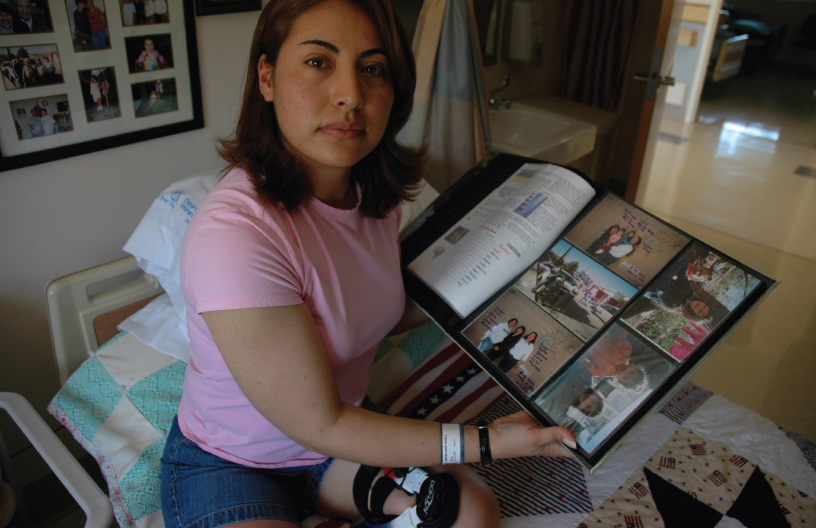5.1.4 Understanding
Printed Page 151
Understanding
While serving with her National Guard unit in Iraq, Army Specialist Claudia Carreon suffered a traumatic brain injury (TBI).2 The injury wiped her memory clean. She could no longer remember major events or people from her past, including her husband and her 2-year-old daughter. However, because she seemed physically “normal,” her TBI went unnoticed and she returned to duty. A few weeks later, Carreon received an order from a commanding officer, but she couldn’t understand it and shortly afterward forgot it. She subsequently was demoted for “failure to follow an order.” When Army doctors realized that she wasn’t being willfully disobedient—but instead simply couldn’t understand or remember orders—her rank was restored, and Carreon was rushed to the Army’s Polytrauma Center in Palo Alto, California. Now Carreon, like many other veterans who have suffered TBIs, carries with her captioned photos of loved ones and a special handheld personal computer, to help her remember people and make sense of everyday conversations.
The challenges faced by Claudia Carreon illustrate the essential role that memory plays in shaping the third stage of listening. Understanding involves interpreting the meaning of another person’s communication by comparing newly received information against our past knowledge (Macrae & Bodenhausen, 2001). Whenever you receive and attend to new information you place it in your short-term memory, the part of your mind that temporarily houses the information while you seek to understand its meaning. While the new information sits in your short-term memory, you call up relevant knowledge from your long-term memory, the part of your mind devoted to permanent information storage. You then compare relevant prior knowledge from your long-term memory with the new information in your short-term memory to create understanding. In Claudia Carreon’s case, her long-term memory was largely erased by her injury. Consequently, whenever she hears new information, she has no foundation from which to make sense of it.
